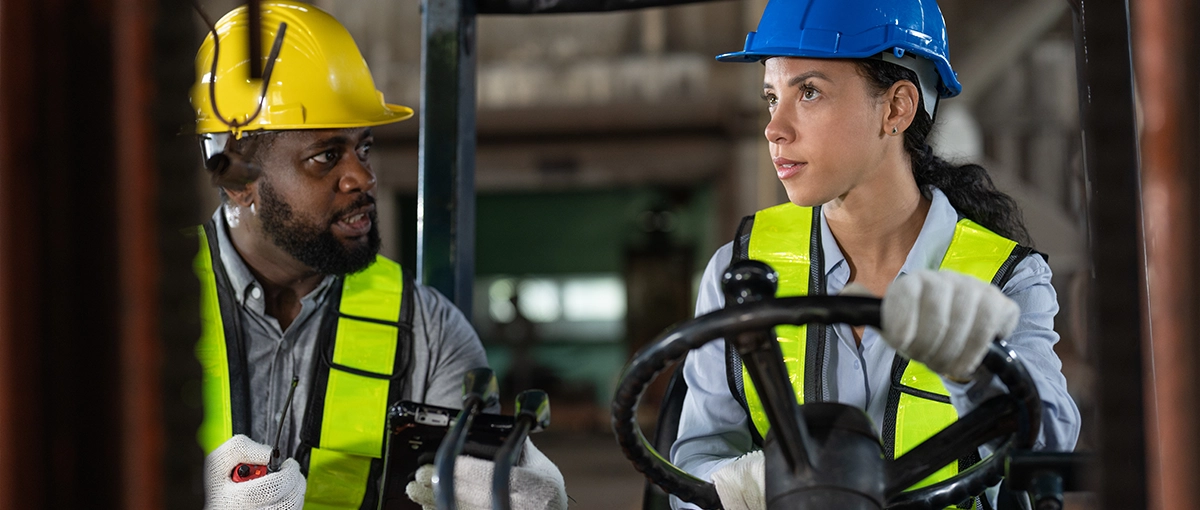10 Common Workplace Safety Violations and How to Avoid Them

Workplace safety often feels like a straightforward goal, but violations still occur frequently. This can lead to injuries, regulatory penalties, or worse. Understanding the common pitfalls and how to steer clear of them is key for anyone managing a facility or workforce. Here are ten violations often encountered in industrial settings, along with practical ways to avoid them.
1. Missing or Inadequate Fall Protection
Falls rank high among workplace accidents, especially in industries like construction and warehousing. The issue often arises from missing guardrails, unsecured ladders, or workers failing to use safety harnesses.
How to Avoid It:
Ensure guardrails, safety nets, and personal fall arrest systems are in place wherever required. Conduct routine checks on equipment and anchor points to confirm compliance with safety standards. Equip employees with proper training to use ladders and harnesses effectively.
2. Unsafe Storage Practices
Poor storage of materials—be it stacking products too high or failing to secure heavy items—can lead to falling objects or blocked pathways. This becomes even riskier with hazardous materials.
How to Avoid It:
Train staff to follow proper storage guidelines, like keeping heavier items at lower levels and maintaining clear aisles. If hazardous materials are involved, use proper containment solutions and label everything according to regulations.
3. Inadequate Personal Protective Equipment (PPE)
From gloves and goggles to hearing protection, PPE is essential for many tasks. Yet violations occur when gear is missing, improperly fitted, or worn inconsistently.
How to Avoid It:
Regularly audit your workplace to identify PPE needs for specific tasks. Supply properly fitted equipment for each role, and replace worn or damaged items immediately. Reinforce training to ensure employees use PPE as intended.
4. Machine Guarding Failures
Exposed moving parts in industrial machinery pose a significant risk to workers. Missing or improperly maintained safeguards are a common violation.
How to Avoid It:
Inspect machinery regularly to ensure all guards are securely in place. Communicate the dangers of bypassing these safety features and enforce strict rules against operating equipment without guards.
5. Blocked or Inaccessible Emergency Exits
Emergency exits that are blocked by equipment, supplies, or locked doors during work hours are a frequent violation. This is particularly dangerous during fires or other emergencies.
How to Avoid It:
Keep exit routes clear at all times. Conduct frequent walk-throughs to identify potential obstructions. Highlight the importance of keeping emergency pathways open during team meetings or shift start-ups.
6. Unsafe Electrical Systems
Improperly maintained wiring, exposed circuits, and overloaded outlets not only breach regulations but also create serious risks of fire or electrocution.
How to Avoid It:
Hire licensed electricians to inspect and maintain wiring and outlets. Use protective covers for circuits and enforce strict limits on the use of extension cords. Address frayed wires or damaged equipment promptly.
7. Lack of Hazard Communication
Workers must be aware of the risks associated with hazardous chemicals or materials in their environment. Missing labels, poor documentation, or insufficient training can lead to serious accidents.
How to Avoid It:
Maintain updated Material Safety Data Sheets (MSDS) and ensure all containers are labeled according to their contents. Schedule periodic training sessions to familiarize employees with hazard identification and handling protocols.
8. Slips, Trips, and Falls
Wet floors, cluttered workspaces, and uneven surfaces often result in injuries. These hazards are avoidable but tend to go unnoticed until someone gets hurt.
How to Avoid It:
Prioritize housekeeping by scheduling regular cleanups. Install slip-resistant flooring or mats in areas prone to moisture. Repair damaged flooring and place visible warning signs near wet areas or obstructions.
9. Improper Ladder Use
Whether it’s standing on the top rung of a step ladder or failing to secure a straight ladder, improper use remains a frequent violation in industrial workplaces.
How to Avoid It:
Train workers on safe ladder usage, including weight limits and proper placement angles. Regularly inspect ladders for signs of wear or damage, and replace faulty equipment immediately. Store ladders properly to prevent unnecessary wear.
10. Neglecting Equipment Maintenance
Equipment that is poorly maintained is not only inefficient but also a significant hazard. Broken parts, worn-out belts, or leaking hydraulic systems can lead to serious accidents.
How to Avoid It:
Develop a preventative maintenance program that includes routine inspections and scheduled servicing. Keep detailed records to track maintenance history and identify patterns that could signal recurring issues. Encourage workers to report unusual sounds, leaks, or performance drops as soon as they notice them.


